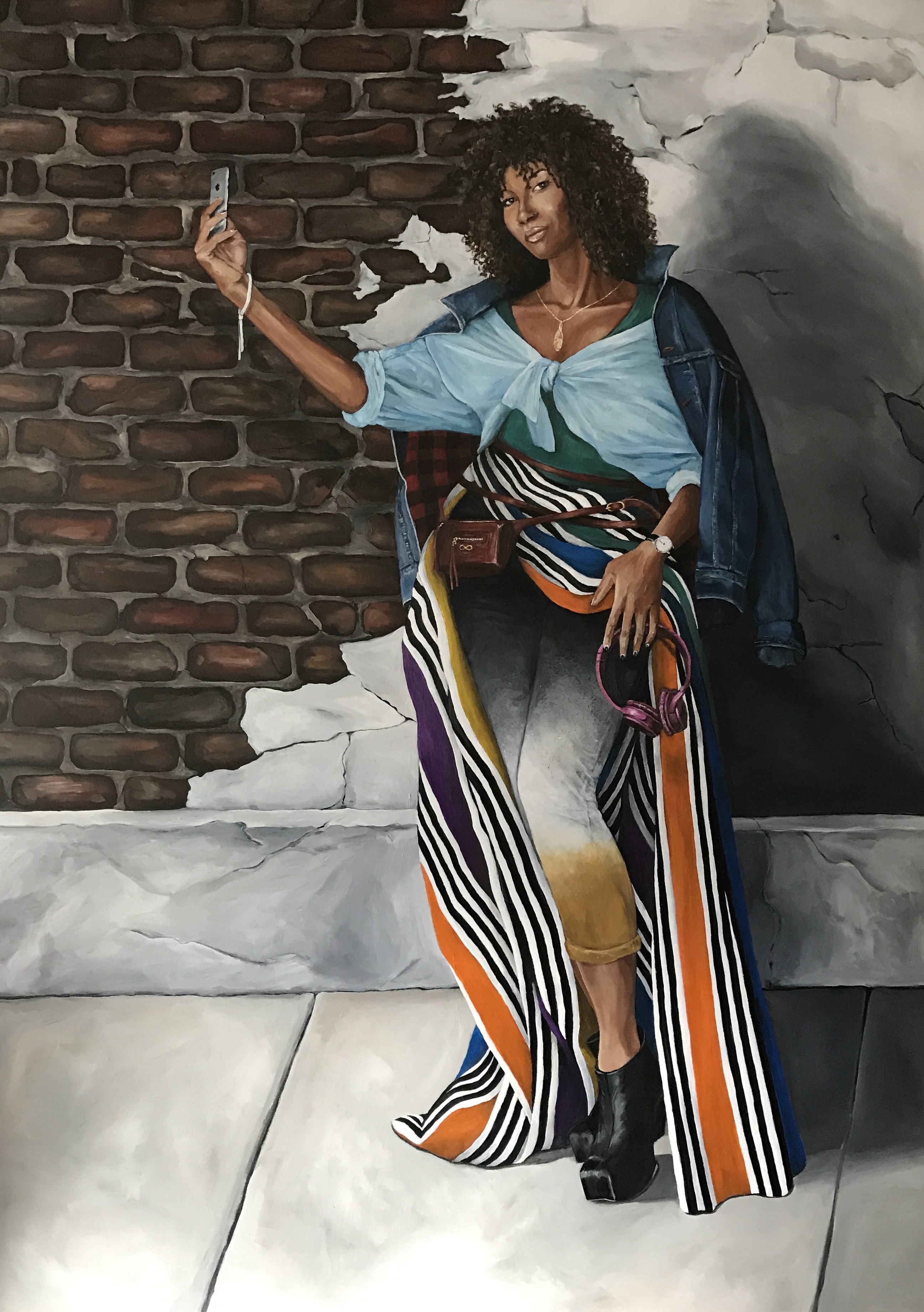-

Souvenir (detail), Chantal Gibson. Multimedia installation with 2000 souvenir spoons, 2 videos (15 min loops), and book.
-

Sweet Childhood, Bushra Junaid. Archival photograph and archival text printed on backlit fabric panel.
-

In Conversation, Gordon Shadrach. Acrylic painting on cradled birch panel, framed with live-edged black walnut.
Here We Are Here
The ROM's exploration of race and belonging in Canada.

Opening January 27, the Royal Ontario Museum’s Here We Are Here: Black Canadian Contemporary Art exhibit represents a culmination of a five-year journey for the curatorial team. Dr. Silvia Forni, ROM curator of African arts and culture, Dr. Julie Crooks, assistant curator at the Art Gallery of Ontario, and independent curator, Dominique Fontaine, engaged scholars, artists, and educators from Ontario’s Black community on how to approach representation of art and artifacts from Africa and diaspora in the context of the ROM, a space Forni identifies as persistently Victorian in character, and “not a cutting-edge institution.”

In Conversation, Gordon Shadrach. Acrylic painting on cradled birch panel, framed with live-edged black walnut.
“The narrative of Canada always seems to position Black people as outsiders, and this is something that had come up a number of occasions,” says Forni of the team’s assessment of historical and contemporary issues relating to Blackness in Canada. “It is frustrating for people for the community to have to justify their presence in Canada in the 21st century, but it happens. Positioning Black contemporary art in the core of the ROM is a gesture of establishing presence, and hopefully will be a stepping stone whereby talking about Black Canada is not something that people find surprising or find challenging or provocative, which are all terms we’ve heard being referred to our project, because it shouldn’t be,” she says. “What we’d like to do with the show is to position Blackness in a way where it’s almost unquestionable.”
Here We Are Here features the original work of nine Canadian artists in dialogue on themes of Blackness.
Here We Are Here features the original work of nine Canadian artists in dialogue on themes of Blackness. Nova Scotian artist Sylvia Hamilton’s historical work exposes the names of those enslaved by Canadians, while Bushra Junaid overlays Atlantic Canadian news clippings on the sugar industry with images of children on cane plantations. Vancouverite Chantal Gibson’s installation of 2000 spray-painted souvenir spoons grapples with a sense of erasure the denial of Black individuality, while painter Gordon Shadrach’s portrait of a woman (the artist’s niece) taking a selfie explores the influences which shape individuals.
Forni disagrees with early commentary that an exhibit of Here We Are Here’s nature is essentially divisive. “People saying, ‘well why are we still talking about race, we’ve had multiculturalism for such a long time’—this is usually a position of white people who do not experience racism,” she says. “We do not know what this will generate, we hope people will look and listen and think.”
Here We Are Here: Black Canadian Contemporary Art opens January 27 at the Royal Ontario Museum, and May 12 at the Montreal Museum of Fine Arts.
_________
Never miss a story. Sign up for NUVO’s weekly newsletter.




